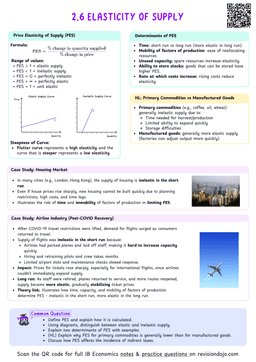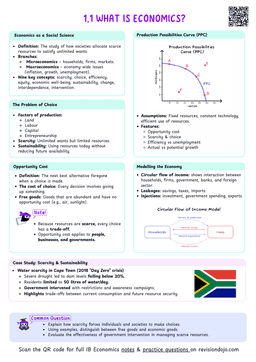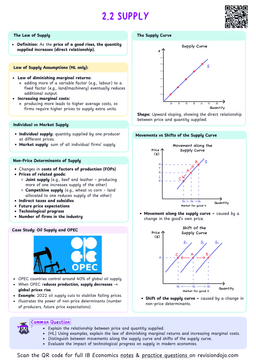Supply-side policies
Government policies aimed at increasing the productive capacity of the economy and improving market efficiency.
Supply-side policies focus on the long-term potential growth of an economy, unlike demand-side policies which target short-term economic fluctuations.
Long-term growth through increased productive capacity
The primary goal of supply-side policies is to boost the economy's productive potential. This is achieved by:
- Improving labor force skills through education and training
- Enhancing infrastructure quality
- Promoting technological advancement
- Encouraging investment in capital goods
Singapore's SkillsFuture program provides citizens with training credits to upgrade their skills, directly contributing to increased workforce productivity and economic capacity.
Improving competition and efficiency
Supply-side policies aim to make markets more competitive and efficient by:
- Removing barriers to entry
- Breaking up monopolies
- Reducing regulatory burdens
- Privatising state-owned enterprises
Think of competition policy as "clearing the path" for businesses to operate more efficiently and innovatively.
Reducing labour costs and unemployment
Labor market flexibility is enhanced through:
- Reform of labour laws
- Streamlining hiring and firing processes
- Adjusting minimum-wage policies
- Modifying unemployment benefits
Don't confuse labor market flexibility with worker exploitation. The goal is to create efficient markets while maintaining worker protections.
Reducing inflation to improve international competitiveness
This goal is achieved by:
- Increasing productive capacity to reduce cost pressures
- Enhancing efficiency to lower production costs
- Improving labor productivity to control unit labour costs
Increasing firms’ incentives to invest in innovation by reducing costs
Firms are encouraged to innovate through:
- Tax incentives for research and development
- Reduced corporate tax rates
- Investment allowances
- Grants for innovation projects
Ireland's low corporate tax rate (12.5%) has successfully attracted international companies and encouraged domestic business investment, contributing to significant economic growth.


